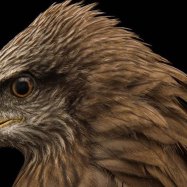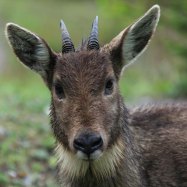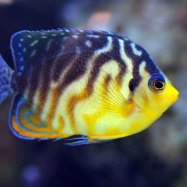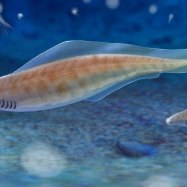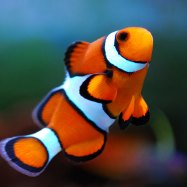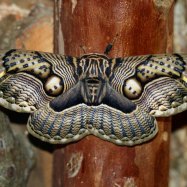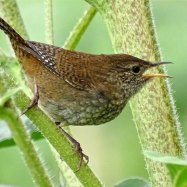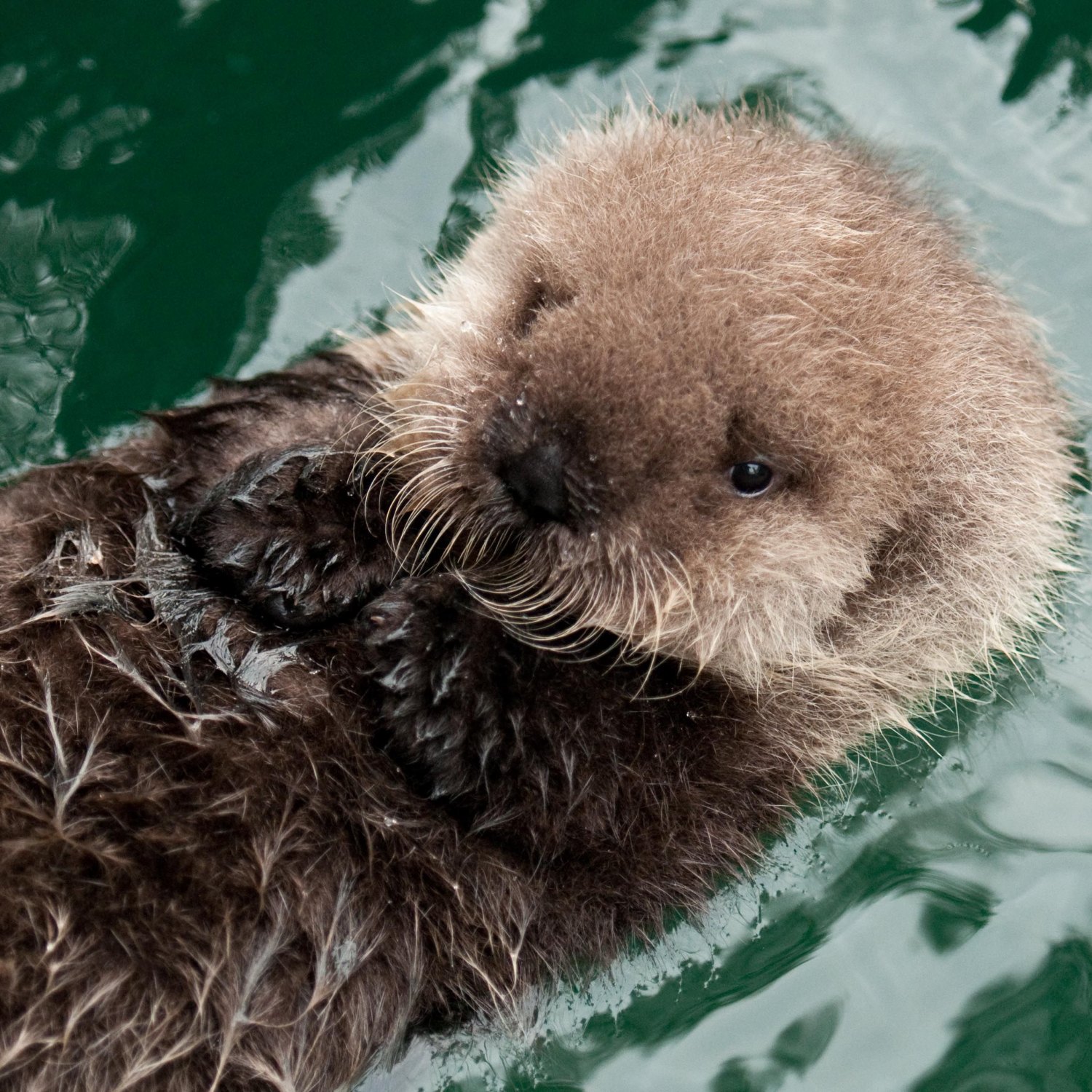
Otter
Up to 1.5 meters
Did you know that otters, from the Mustelidae family, can be found on both land and water? These playful animals, measuring up to 1.5 meters, have a slender and elongated body shape. So next time you're by a body of water, keep an eye out for these adorable creatures! #otters #wildlife #mustelidae
Animal Details Summary:
Common Name: Otter
Kingdom: Animalia
Habitat: Freshwater and marine environments
The Fascinating World of Otters: Adorable Aquatic Mammals
When you think of playful, cute, and mischievous animals, one creature that comes to mind is an otter. With their adorable appearance and playful antics, it's no wonder why they have captured the hearts of many people. But there is more to these aquatic creatures than just their cuteness – they are intelligent and fascinating creatures with unique physical and behavioral characteristics.Otters belong to the family Lutrinae in the order Carnivora and can be found in both freshwater and marine environments Otter. They are carnivorous animals, and common prey includes fish, crustaceans, mollusks, and small mammals. Otters have a widespread geographical distribution and can be found in North and South America, Europe, Asia, and Africa. However, the specific country of origin varies depending on the species.
The Anatomy and Physical Characteristics of Otters
The scientific name for otters is Lutrinae, and they belong to the kingdom Animalia and phylum Chordata. Their physical characteristics make them well-suited to their aquatic lifestyle. Otters have a slender and elongated body shape, allowing them to be fast and agile swimmers. Their body length can range from 30 centimeters to 1.5 meters, depending on the species.One of the most notable features of otters is their thick, fur-covered bodies Opossum. Their fur is waterproof, thanks to a layer of air trapped between the hairs, providing insulation and keeping them warm in cold water. The coloration of otters can range from brown to gray, with some species having distinctive white or reddish patches.
They also have webbed feet, which they use for swimming and diving. This unique adaptation allows them to glide through the water with ease, propelling them to catch their prey. Otters also have long, agile tails that help them steer while swimming.
Behavior and Habitat of Otters
Otters are primarily solitary animals but can be found in groups, called rafts, during feeding and playing activities. They have a keen sense of smell and excellent underwater vision, which helps them locate food in murky waters.Freshwater otters, also known as river otters, can be found near streams, lakes, and rivers. Marine otters, on the other hand, prefer rocky shorelines and shallow coastal waters. Otters are highly territorial, and they mark their territories with urine and scat.
Otters are active both on land and in water, and they can spend up to five hours a day grooming themselves. This process involves spreading oil from their glands onto their fur, which helps keep their fur waterproof. Apart from grooming, otters are known for their playful nature. They are often seen rolling, sliding, and playing with objects in the water, even using rocks as tools to open shellfish.
The Diet of Otters
As mentioned earlier, otters are carnivores and feed on a variety of prey depending on their location and species. Their main diet consists of fish, and they have been known to eat up to 20% of their body weight in fish per day. Apart from fish, they also consume crustaceans, mollusks, and small mammals such as frogs and rodents.Conservation Status and Threats Faced by Otters
Most otter species are listed as endangered or vulnerable due to habitat loss and human disturbance. Otters are also hunted for their fur, which has put a strain on their populations. In some areas, otters are also preyed upon by larger animals, such as alligators and crocodiles. Pollution, including oil spills and chemical runoffs, can also harm otters and their habitats.Conservation efforts, such as habitat preservation and laws protecting otters from hunting and trapping, have helped improve their population in some areas. However, there is still a need for continued conservation efforts to ensure the survival of otters and their ecosystems.
The Role of Otters in Ecosystems
Otters play a crucial role in maintaining balance in freshwater and marine ecosystems. As apex predators, they control the populations of their prey species, preventing overpopulation and potential damage to the ecosystem.Additionally, otters help keep aquatic vegetation in check by consuming herbivorous fish that would otherwise graze on the plants. In this way, they promote the growth and biodiversity of aquatic plants, which are essential for a healthy ecosystem.
The Threat of Otters to Human Activities
Although otters are generally harmless, there have been reported instances of otters attacking and biting humans. These incidents are rare and are usually a result of human disturbance or improper handling of the animals.It is essential to remember that otters are wild animals and should not be approached or fed in the wild. Over time, otters can become habituated to human contact, which can be dangerous for both humans and the otters.
The Adoption of Otters as Pets
Due to their cute and playful nature, some people may be tempted to adopt an otter as a pet. However, keeping otters as pets is illegal and highly discouraged. Otters are wild animals and have specific dietary, social, and environmental requirements that cannot be met in a domestic setting. Furthermore, keeping otters as pets is not only harmful to the animal but also dangerous for humans.Instead of adopting an otter as a pet, consider supporting conservation efforts and visiting sanctuaries where you can observe otters in their natural habitat.
How to Help Protect Otters
There are various ways in which you can help conserve and protect otters and their habitats.Firstly, educate yourself and others about otters and the threats they face. By spreading awareness, you can help others understand the importance of protecting otters and their ecosystems.
Support and volunteer at conservation organizations that work towards protecting otters. These organizations work on habitat preservation, rescue and rehabilitation of injured or orphaned otters, and research.
Lastly, make conscious choices in your daily life to reduce pollution and protect the environment. Simple actions like reducing your use of single-use plastics, properly disposing of waste, and conserving water can make a significant impact on the environment and help otters thrive.
In Conclusion
Otters are more than just cute and playful animals; they are an essential part of ecosystems, helping to maintain balance and promote biodiversity. From their unique physical characteristics to their playful behavior, otters have captivated the hearts of many people. However, their populations are facing threats, and it is our responsibility to protect and conserve these fascinating creatures for future generations to enjoy. So, let's spread awareness and support conservation efforts to ensure the survival of otters in their natural habitats.

Otter
Animal Details Otter - Scientific Name: Lutrinae
- Category: Animals O
- Scientific Name: Lutrinae
- Common Name: Otter
- Kingdom: Animalia
- Phylum: Chordata
- Class: Mammalia
- Order: Carnivora
- Family: Mustelidae
- Habitat: Freshwater and marine environments
- Feeding Method: Carnivorous
- Geographical Distribution: North and South America, Europe, Asia, and Africa
- Country of Origin: Varies depending on the species
- Location: Both land and water
- Animal Coloration: Ranges from brown to gray
- Body Shape: Slender and elongated
- Length: Up to 1.5 meters
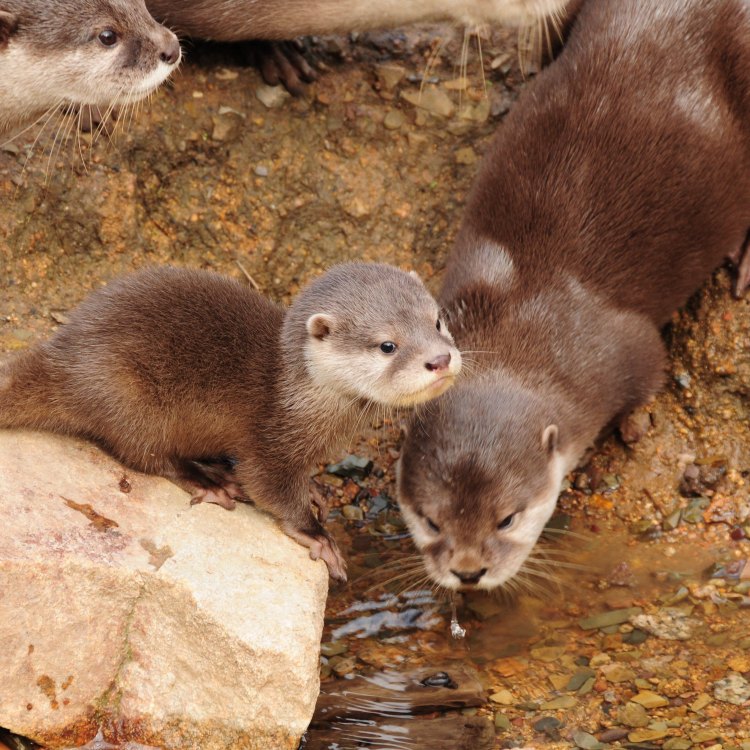
Otter
- Adult Size: Varies depending on the species
- Average Lifespan: 10 to 15 years
- Reproduction: Sexual
- Reproductive Behavior: Mating season varies depending on the species
- Sound or Call: Varies depending on the species
- Migration Pattern: Some species migrate, while others stay in one area
- Social Groups: Often live in family groups
- Behavior: Active and playful
- Threats: Habitat loss, pollution, hunting
- Conservation Status: Varies depending on the species
- Impact on Ecosystem: Otters play a crucial role in maintaining the health of aquatic ecosystems
- Human Use: Hunted for fur in the past
- Distinctive Features: Webbed feet, streamlined body, dense fur
- Interesting Facts: Otters are excellent swimmers and can close their ears and nose underwater
- Predator: Varies depending on the species
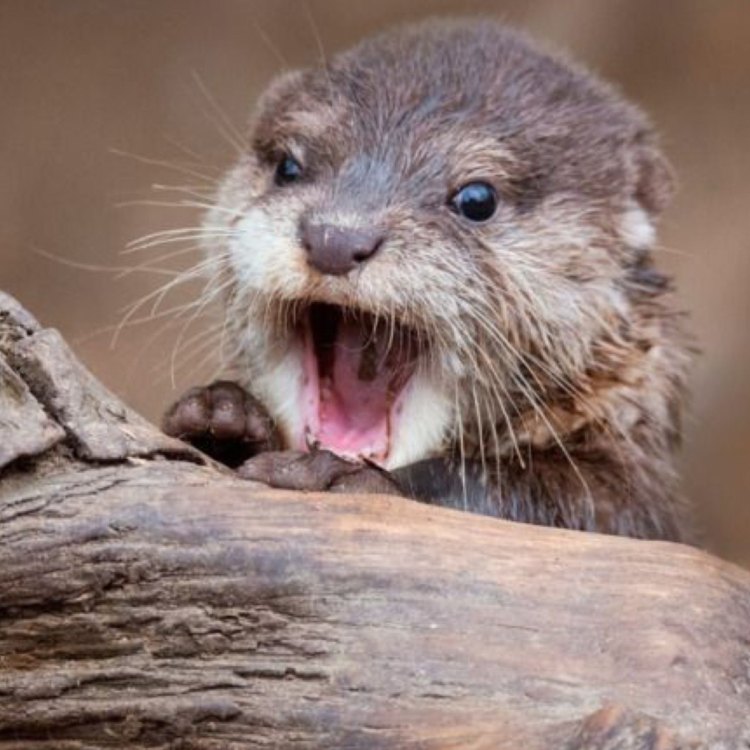
Lutrinae
The Fascinating World of Otters - From Playful Creatures to Guardians of Aquatic Ecosystems
Have you ever spotted a curious creature splashing and playing in the water, with its thick coat of fur glistening in the sun? Chances are, you were looking at an otter – a playful and lively animal that has captured the hearts of many. These sleek and adorable creatures have long been a popular attraction for biologists and nature lovers alike, with their unique features and interesting behaviors. In this article, we will dive into the world of otters, exploring their diverse characteristics, habits, and contributions to the ecosystem.Before we delve into the details, let's first take a look at some basic information about otters PeaceOfAnimals.Com. There are 13 species of otters, belonging to the subfamily Lutrinae, with the largest being the sea otter and the smallest being the Asian small-clawed otter. They vary in size depending on the species, with the sea otters reaching up to 4 feet in length and weighing around 100 pounds, while the smallest species can be as little as 2 feet in length and weigh only 6 pounds. Their average lifespan ranges from 10 to 15 years, with some species living even longer in captivity.
Otters are known for their sexual reproduction, with distinct mating seasons varying by species. Some species mate all year round, while others have specific breeding seasons. During the mating season, male otters will compete for the attention of the females, often performing vocal displays and playful behaviors to impress their potential mates. Once a pair has formed, they engage in a unique bonding behavior called "holding hands" – where they grab each other's paws and float together, often seen as a symbol of affection and trust.
Another intriguing aspect of otter behavior is their use of sounds and calls. Otters have a wide range of vocalizations, from high-pitched chirps to low grunts, and each species has its distinctive sound Orchard Oriole. These sounds are used for communication within family groups, signaling danger, and expressing emotions such as joy, anger, or distress.
When it comes to migration patterns, otters are a diverse group. Some species, such as the North American river otters, are known for their nomadic behavior, traveling long distances in search of food. Other species, such as the sea otters, are more stationary, staying in one area for their entire lives. However, factors such as food availability and habitat changes can influence their movement patterns.
Otters are social animals and are often seen living in family groups called "rafts," consisting of a male, female, and their offspring. These groups are essential for otters' survival as they provide protection, aid in hunting, and contribute to the overall well-being of the group. Otters are highly active animals, with a playful and curious nature, spending most of their time swimming, hunting, and grooming.
However, despite their charm and playful behavior, otters face a range of threats that endanger their survival. Habitat loss, mainly due to human activities such as urban development and pollution, is a significant threat to otters. As creatures that depend on clean water for their survival, pollution not only affects their habitat but also their food sources, leading to a decline in their populations.
Additionally, otters have been hunted for their dense, water-repellent fur in the past, decimating their numbers in many regions. Although hunting for commercial purposes has been banned, illegal poaching for the fur market still poses a threat to otters' survival in some areas.
Furthermore, climate change is also becoming a significant concern for otters' well-being, as it leads to changes in their habitat, food availability, and overall ecosystem health. As apex predators, otters play a crucial role in maintaining the balance of aquatic ecosystems, and their decline can have far-reaching impacts.
The conservation status of otters varies by species, with some, such as the North American river otter, being listed as Least Concern, while others, such as the giant otter, are considered Endangered. The International Union for Conservation of Nature (IUCN) lists six out of the thirteen species as vulnerable or endangered. Therefore, there is an urgent need for conservation efforts to protect these fascinating creatures.
Apart from their playful nature and significant role in maintaining aquatic ecosystems, otters have several distinctive features that make them stand out from other mammals. Otters have webbed feet, which act as efficient paddles for swimming. Their bodies are streamlined, and they can close their ears and nose while diving underwater, thanks to small flaps of skin. Their dense fur, consisting of two layers, keeps them warm in cold water and helps them stay buoyant.
Otters are excellent swimmers, and their unique adaptations make them highly efficient in the water. With their webbed feet, they can reach speeds of up to 5 miles per hour and dive to depths of 60 feet in search of food. Their dense fur also traps air bubbles, creating a layer of insulation which keeps them warm in the water, even in cold temperatures.
Another interesting fact about otters is their use of tools for hunting. While most animals use their natural abilities to hunt and gather food, otters are known for their intelligence and use of tools. Some species, such as the sea otters, use rocks to crack open the shells of their prey, while others use sticks to dig for food in the ground. This behavior showcases their problem-solving skills and adaptability.
Although they may seem like cute and harmless creatures, otters do have natural predators that pose a threat to them. Their primary predators include larger mammals, such as bears and wolves, and birds of prey, such as eagles and hawks. These predators mainly target young or injured otters, as healthy and adult otters can be fierce and agile swimmers, making it difficult for their predators to catch them.
In conclusion, otters are fascinating creatures with diverse characteristics, behaviors, and roles in the ecosystem. Despite facing numerous threats, they continue to thrive in their natural habitats, captivating our attention and showcasing their resilience against adversity. As responsible inhabitants of this planet, it is our duty to protect these incredible animals and their fragile ecosystems, ensuring that future generations can continue to marvel at the wonders of nature.
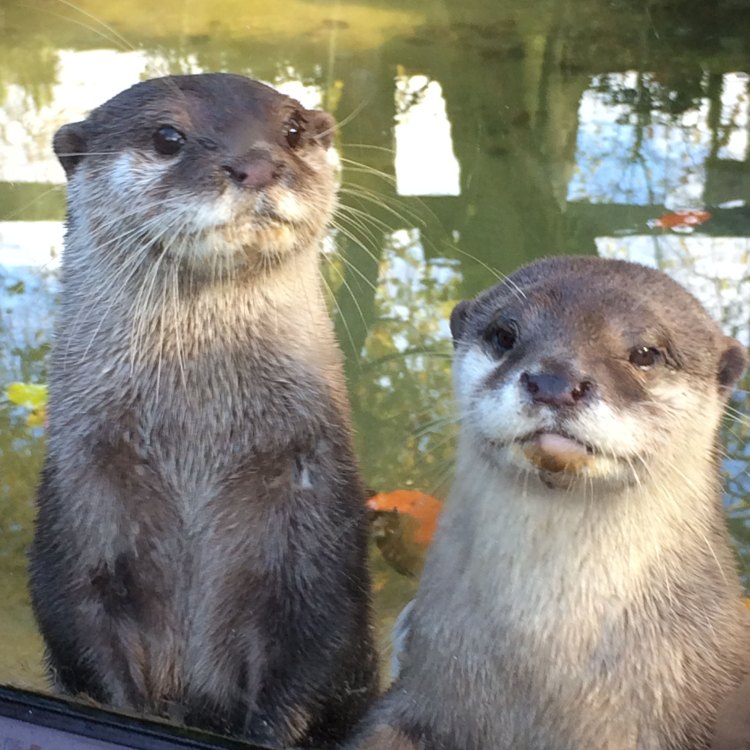
The Fascinating World of Otters: Adorable Aquatic Mammals
Disclaimer: The content provided is for informational purposes only. We cannot guarantee the accuracy of the information on this page 100%. All information provided here may change without prior notice.



